By ISV Team, Alibaba Cloud Intelligence International
The life of a startup company can be challenging and risky. From navigating uncertain market conditions to managing limited resources and facing intense competition, startups face numerous obstacles on their journey to success.
Software as a Service (SaaS) is a software distribution model where applications are hosted by a third-party provider and made available to customers over the internet. The flexibility, cost-effectiveness and accessibility offered by SaaS model, make it one of the most popular and successful business models for startup companies. There are significant competitive advantages provided by SaaS model for internet applications.
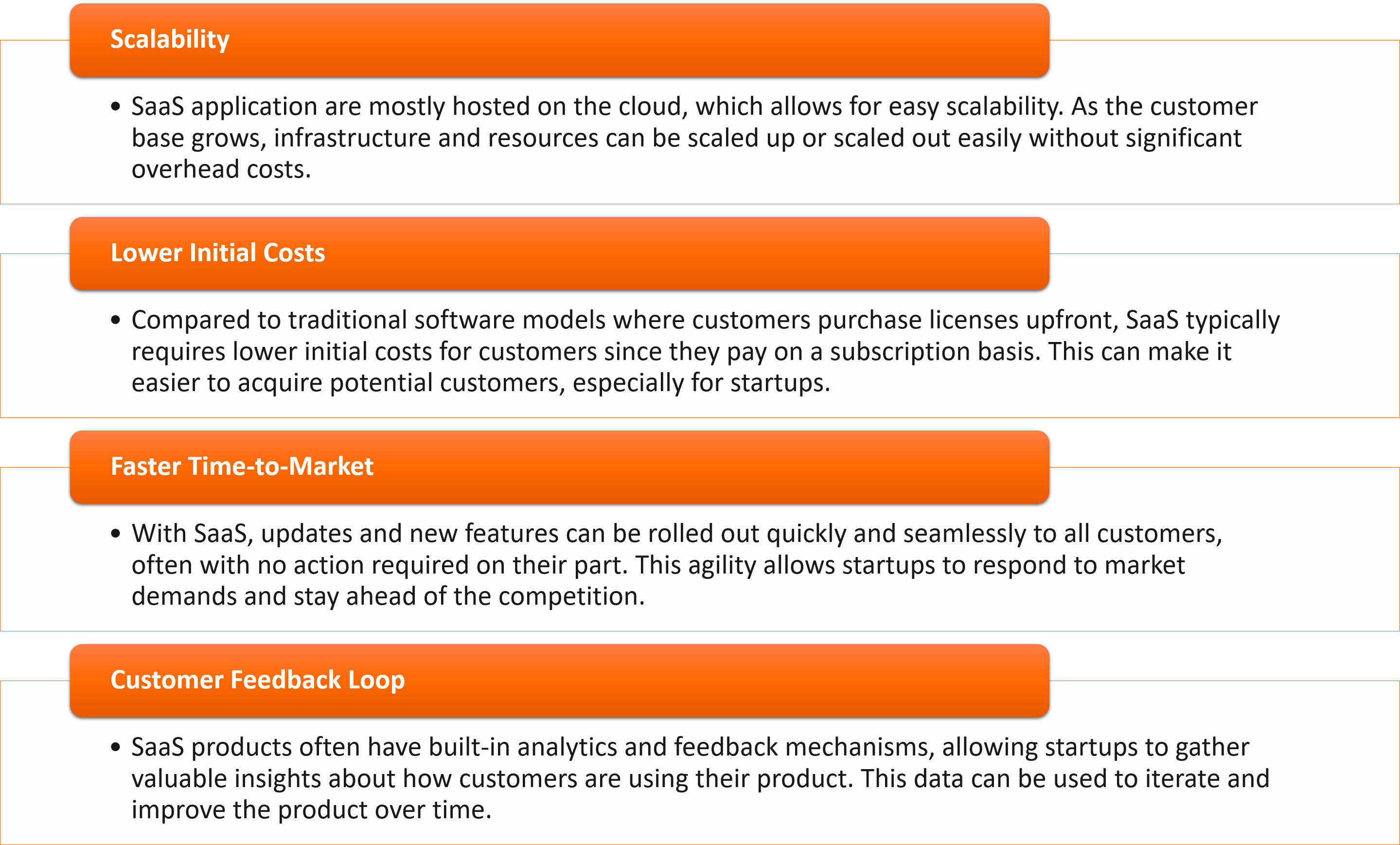
To successfully bring a SaaS solution to-market, it is crucial to validate the business idea and understand market needs. Additionally, it is also necessary to develop a detailed business plan to guide the application development and strategy.
The application development strategy may vary across different companies and different categories of applications; however, there are some basic guidelines to follow. Given that time and resource are critical for startups, adhering to these guidelines can help ensure efficiency and effectiveness.
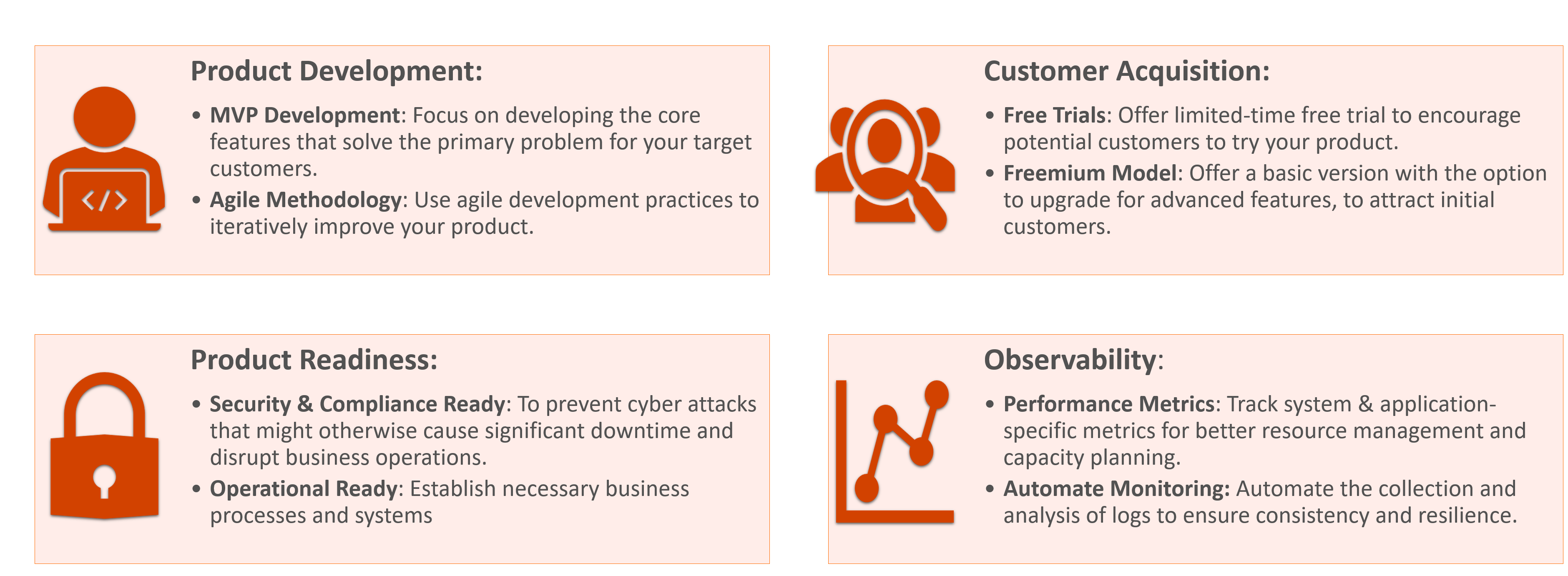
To support the development methodologies of the SaaS applications, Alibaba Cloud offers a comprehensive suite of tools and services that cater to various stages of development, deployment, and management.
The architecture diagram below is the sample architecture design for SaaS application deployment on Alibaba Cloud. Here is a list of key Alibaba Cloud products that are particular useful for SaaS deployment.
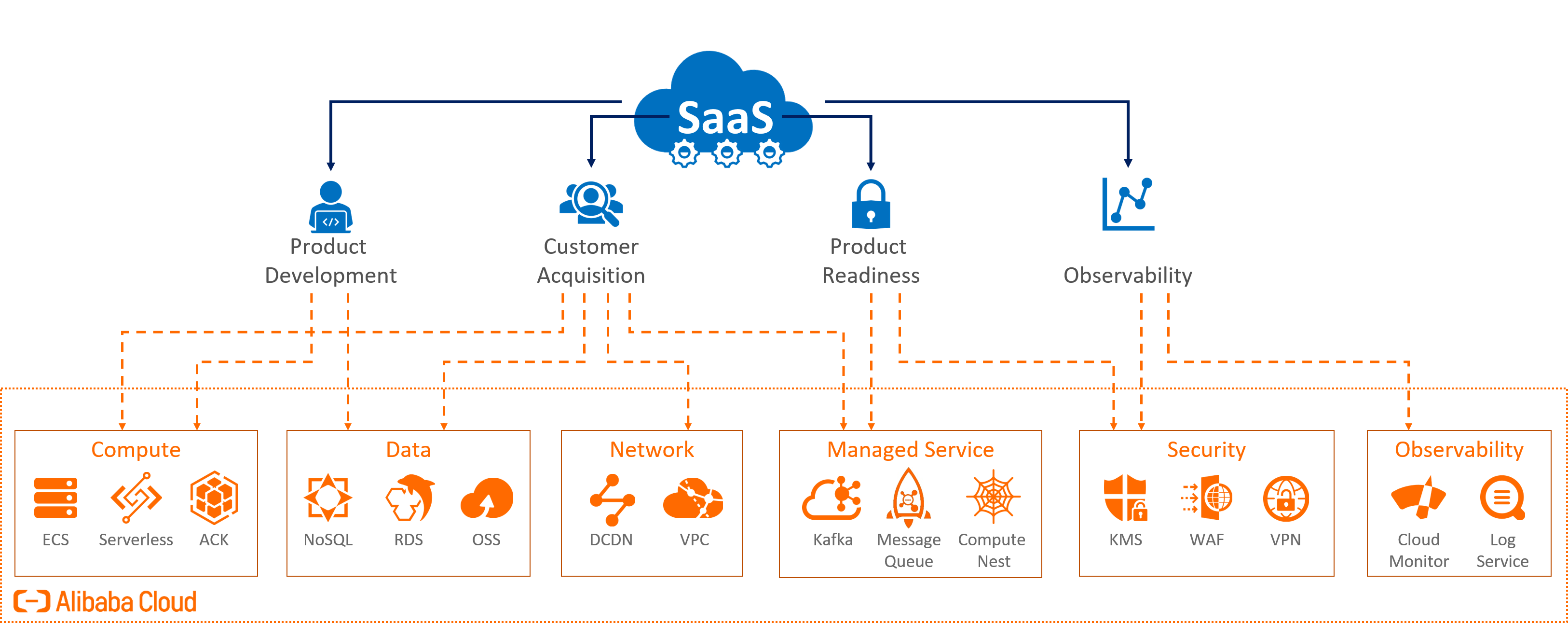
• Compute
• Storage and Data
• Network and Acceleration
• Integration and Messaging
• Security and Compliance
• Monitoring and Observability
With the support from those Cloud-native products and services, we are able to build up a SaaS platform easily for your applications (see below diagram as sample system architecture design of SaaS application on Alibaba Cloud).
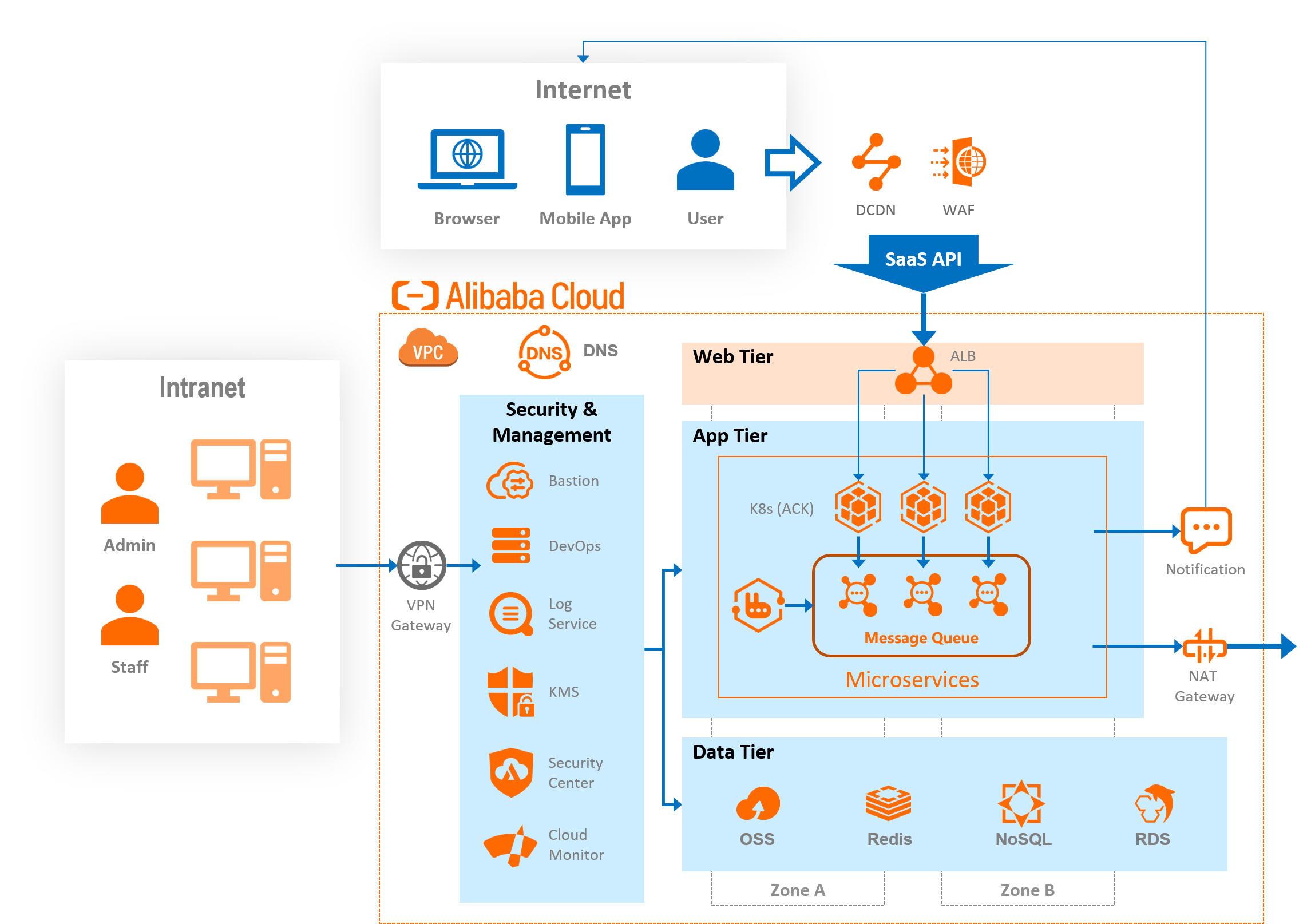
Microservice architecture is highly useful for SaaS applications. It enables the development and deployment of applications as a collection of loosely coupled, independently deployable services. It breaks down the application into smaller services makes the codebase more modular and easier to maintain and understand.
Microservice architecture empowers SaaS providers with the flexibility, scalability, resilience, and agility required to deliver robust, scalable, and adaptable solutions to their customers.
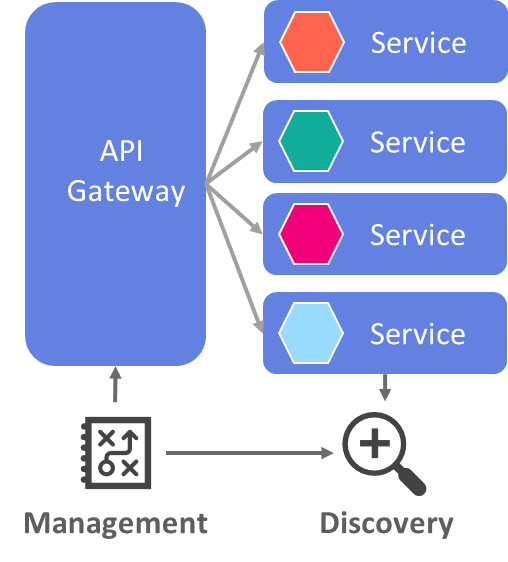
Serverless architecture, which involves using cloud services to manage the infrastructure and automatically scale based on demand, is highly beneficial for SaaS applications due to its scalability, cost efficiency, reduced operational complexity, and faster time to market.
• Focus on core features: By leveraging serverless services, SaaS companies can focus on delivering value to their customers while leaving infrastructure management to the cloud provider.
• Reduced operational overhead: Serverless platforms abstract away much of the operational complexity, such as server provisioning, scaling, and maintenance. This frees up resources that can be allocated to other business-critical tasks, such as customer support or product development.
• High availability and fault tolerance: Serverless platforms offer built-in features for high availability and fault tolerance. Functions are automatically replicated across multiple availability zones, reducing the risk of downtime and ensuring resilience to failures.
• Elasticity: Serverless architectures can handle sudden spikes in traffic seamlessly. They automatically scale up to accommodate increased demand and scale down during periods of low activity, ensuring optimal resource utilization. The diagram below shows the difference in elasticity between the Auto-scale architecture and Serverless architecture.

Multi-tenancy is fundamental to the success of SaaS applications, and it allows SaaS providers to offer customization and personalization to individual customers without sacrificing operational efficiency.
For the practices of deploying Kubernetes Multi-tenant Cluster, please refer to the blog: https://www.alibabacloud.com/blog/practices-of-kubernetes-multi-tenant-clusters_596178
System integration is crucial for SaaS applications, especially considering their distributed nature and the need to interact with various systems and services.
• Data Exchange: SaaS applications often need to exchange data with other systems, such as CRM platforms, ERP systems, payment gateways, or third-party APIs. System integration allows seamless data exchange between different systems, ensuring consistency, accuracy, and reliability of data across the ecosystem.
• Functionality Expansion: Integrating with other systems and services allows SaaS applications to extend their functionality and provide additional value to users. By integrating with complementary tools or platforms, SaaS applications can offer new features, capabilities, or integrations that enhance the user experience and meet evolving customer needs.
• Workflow Automation: System integration enables workflow automation by connecting different systems and automating data flows, processes, and tasks. SaaS applications can integrate with workflow management systems, task queues, or business process automation platforms to streamline operations, improve efficiency, and reduce manual effort.
Unified observability refers to the ability to monitor, analyze, and manage the entire SaaS application stack, including infrastructure, applications, and services, from a single pane of glass. This approach provides comprehensive insights into the application's performance, reliability, and security.
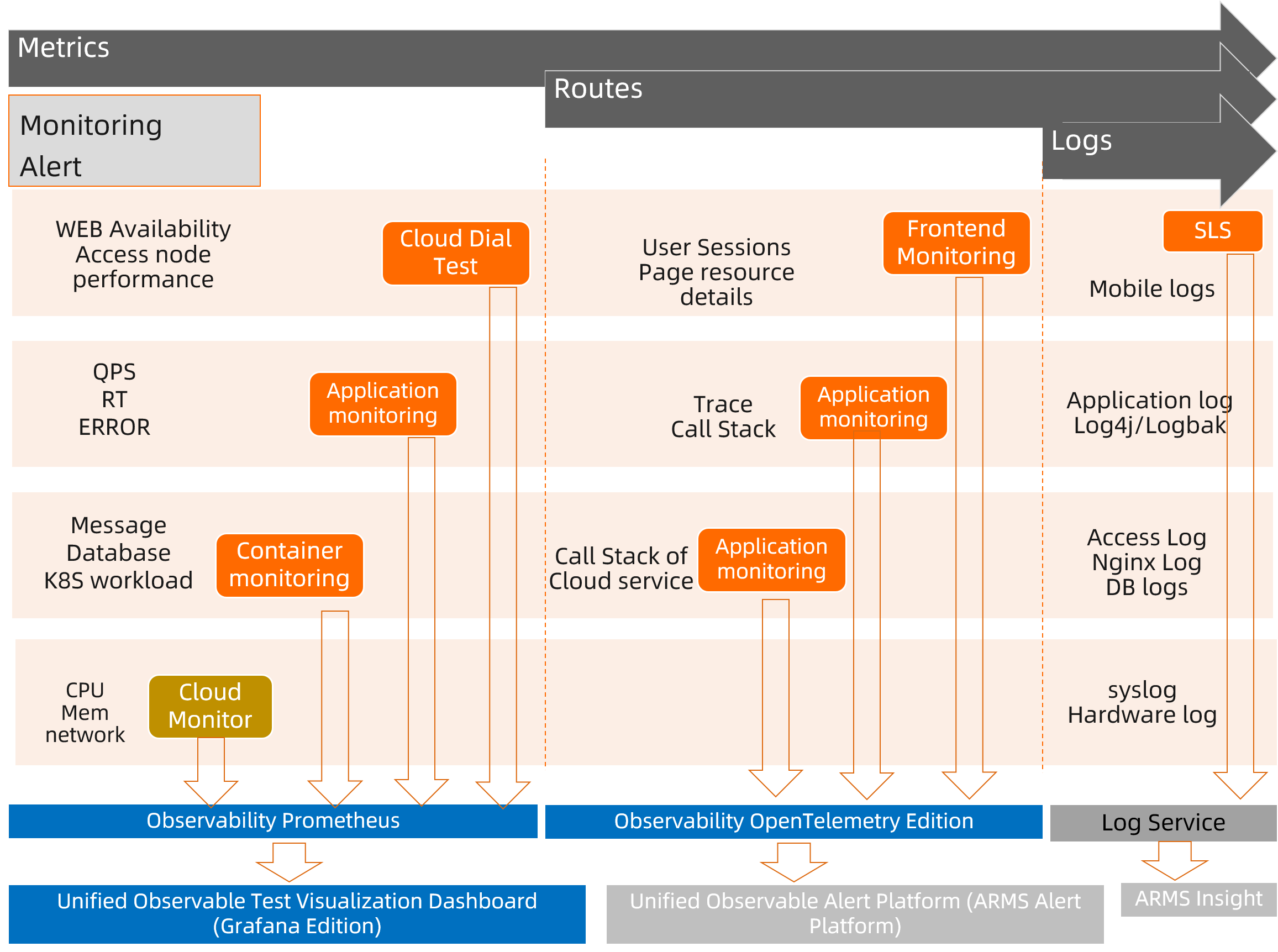
Alibaba Cloud offer Well Architected Framework to help our startups to implement their SaaS solutions, conforming to a set of design principles and best practices across a wide range of topics. Well-Architected Framework comes with a number of design and solutions for building good and robust systems on the cloud. It includes questions and answers on each pillar, providing practical advice on how to address real-word challenges.
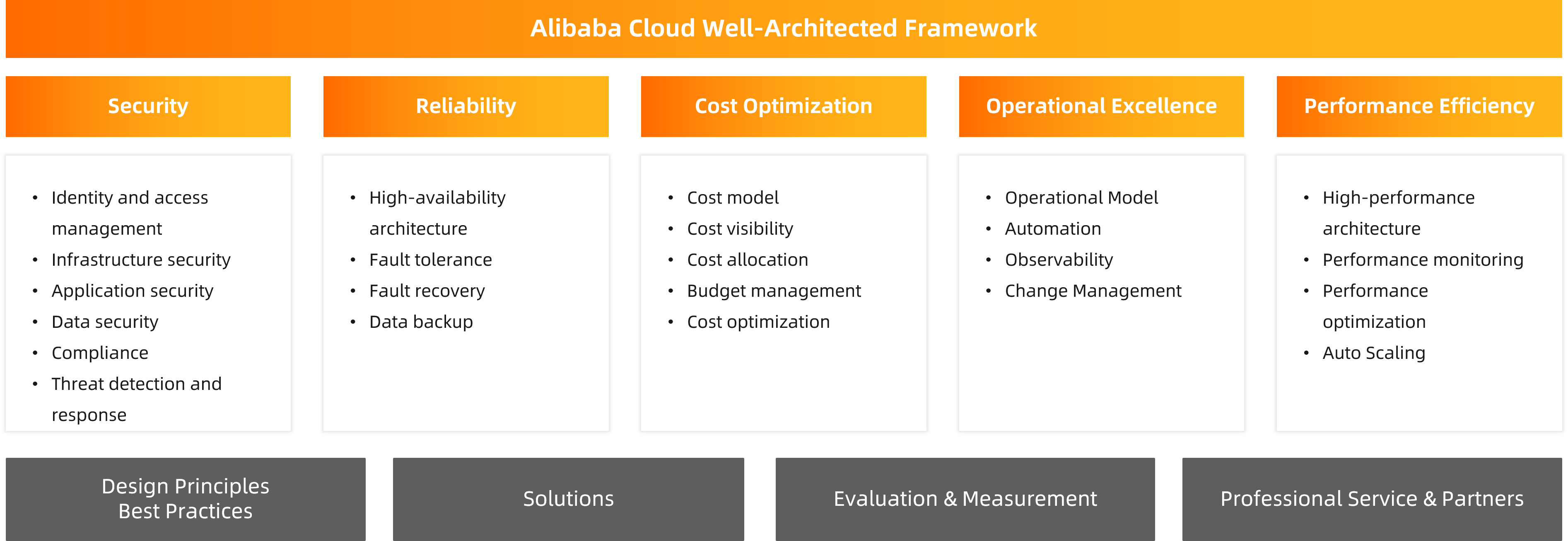
Alibaba Cloud Launches Generative AI Course to Upskill Global Digital Talent
2024 Alibaba Cloud Fintech Go Global Summit Successfully Concluded

1,320 posts | 464 followers
FollowAlibaba Clouder - March 26, 2020
Alibaba Clouder - July 22, 2019
Alibaba Cloud Community - May 31, 2024
Alibaba Clouder - March 10, 2021
Alibaba Cloud Community - November 3, 2021
Alibaba Clouder - March 22, 2019

1,320 posts | 464 followers
Follow IDaaS
IDaaS
Make identity management a painless experience and eliminate Identity Silos
Learn More Elastic Desktop Service
Elastic Desktop Service
A convenient and secure cloud-based Desktop-as-a-Service (DaaS) solution
Learn More Blockchain as a Service
Blockchain as a Service
BaaS provides an enterprise-level platform service based on leading blockchain technologies, which helps you build a trusted cloud infrastructure.
Learn More Message Queue for Apache Kafka
Message Queue for Apache Kafka
A fully-managed Apache Kafka service to help you quickly build data pipelines for your big data analytics.
Learn MoreMore Posts by Alibaba Cloud Community